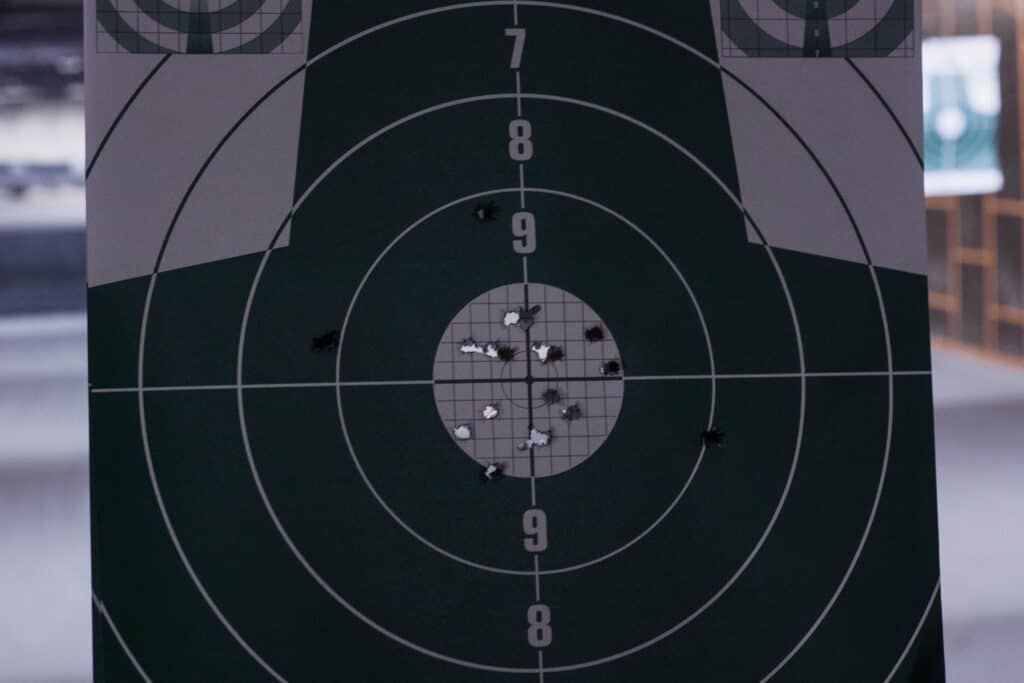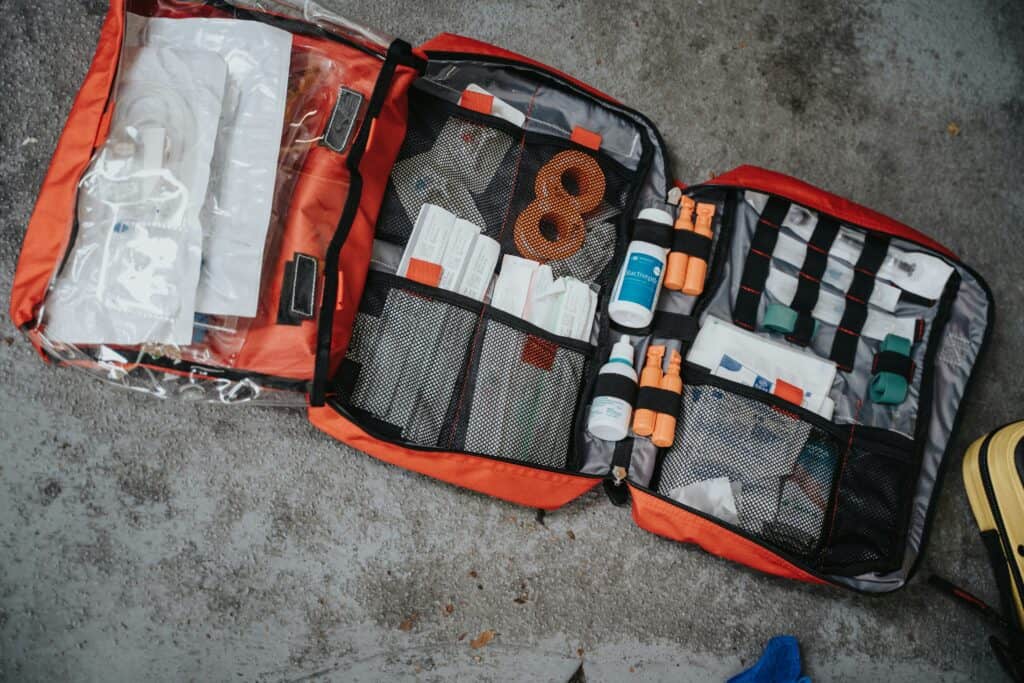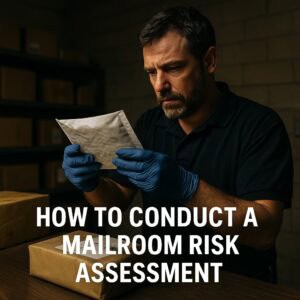In recent years, the need for comprehensive church security has grown significantly, largely due to the increase in incidents involving violence and vandalism targeting houses of worship. As congregations gather to worship, it is essential to recognize the potential threats they may face and take appropriate steps to mitigate them. One of the most crucial aspects of ensuring the safety of a church community is proper training and education for its security team members.
Developing a well-trained security team involves both physical and mental preparedness for the individuals serving on the team. This means selecting individuals who are competent, self-controlled, and able to think quickly during tense situations. Church security training plays a critical role in equipping these individuals with the necessary skills and knowledge to effectively respond to potential security threats and ensure a safe environment for congregants and visitors.
Conducting regular training sessions and emergency drills is vital for church security teams to stay updated and prepared for any potential incidents. These training sessions not only prepare team members for handling threats but also create a sense of awareness and understanding among the congregation about the importance of church security.
The Need for Church Security Training
The Rising Threat
In recent years, there has been an increase in violence targeting churches and other religious institutions. Protecting the congregation has become a priority for many churches as they seek to provide a safe and welcoming environment for their members. The risks churches face extend beyond physical violence, as they are also vulnerable to incidents such as theft, fire, and accidents.
Having a well-trained security team and implementing appropriate security measures are important to ensure the safety of the congregation. Training courses can help church leaders and volunteers respond to various situations effectively and potentially save lives.
Safety Measures in Other Institutions
Security measures in other establishments, such as schools and businesses, can offer valuable insight for churches looking to establish their own safety protocols. Just as schools have procedures in place for handling emergencies like fires, churches should also have a plan for dealing with such accidents.
By adopting security measures used by other institutions, churches can devise tailored strategies to better protect their congregation. For example, having a security plan and team can help address risks and deter potential offenders. Additionally, installing video surveillance and alarm systems can provide valuable information about the physical security of the premises.
Furthermore, considering the legal and ethical aspects of implementing security measures in churches is just as important as understanding the risks and challenges they face. Church security training can help guide church leaders in making informed decisions about the security measures they choose to employ.
Church Security Team Formation
Staff and Volunteer Participation
Forming a church security team is crucial to ensure the safety and security of the congregation. A well-structured team should involve both staff and volunteers who are dedicated to maintaining a secure environment for all. Recruiting enthusiastic and committed members from the congregation will help create a strong and reliable security team.
It is essential for the security team members to undergo appropriate training in order to be effective in handling various situations. Proper background checks should also be conducted for all members, to ensure that they have the requisite qualifications and experience to be responsible for the safety of others.
Effective communication is key within the security team. Team members must understand their roles and responsibilities, and they should be able to communicate clearly and efficiently with each other during emergencies. Regular meetings, drills, and practice scenarios will help to improve coordination among team members and ensure that they are well-prepared for any situation.
Collaboration with Law Enforcement Agencies
In addition to the church security team, building a strong partnership with local law enforcement agencies is a significant aspect of maintaining safety in places of worship. This collaboration allows for better coordination and communication during emergencies, and it can also lead to the sharing of valuable resources and expertise.
Working closely with local law enforcement agencies will help the church security team gain a deeper understanding of potential threats and vulnerabilities they may face. Furthermore, law enforcement professionals can provide guidance on best practices for preventing or handling emergencies such as active shooter situations or natural disasters.
To foster these partnerships, the church security team should be proactive in reaching out to local law enforcement and inviting them to participate in training sessions and other church-related events. This will not only improve the relationship between the two entities but also provide valuable insights for both parties in ensuring the safety of the congregation.
By forming a well-trained church security team, involving staff and volunteers, and collaborating with local law enforcement, a church can significantly improve its safety and security measures. These efforts help to protect the congregation and ensure a peaceful and welcoming environment for all.
Assessing Risks and Vulnerabilities
Threat Identification
Identifying potential threats is the first step in ensuring church security. Some common threats faced by houses of worship include natural disasters, accidents, violence, and theft. It is vital for church leaders to be aware of their specific vulnerabilities, as different institutions may face unique risks depending on their location, congregation size, and community dynamics. By understanding and addressing potential dangers, organizations can establish safety measures to protect their members and facilities.
Risk Assessment Process
The risk assessment process allows churches to systematically evaluate their vulnerabilities and prioritize appropriate responses. By following a structured approach, church leaders can ensure that their security efforts are focused and effective.
- Establish a security team: Gather a group of individuals invested in the organization’s security and well-being. This team will lead the risk assessment process and ensure that appropriate safety measures are put into place.
- Identify potential hazards: Compile a list of possible threats and vulnerabilities specific to the house of worship. Take into account factors like location, congregation size, building layout, and community issues.
- Evaluate the likelihood and impact of each threat: Assess the probability of each identified hazard occurring and consider the potential consequences if it were to happen. This stage will help prioritize which threats require immediate attention.
- Recommend appropriate safety measures: Based on the identified risks, propose strategies to address each vulnerability. This could involve physical security upgrades, implementing new policies, or conducting safety trainings for staff and congregants.
- Implement and review: Put the recommended safety measures into action and continuously monitor their effectiveness. Regularly review the risk assessment to account for any changes in the institution’s circumstances.
Applying a thorough risk assessment process helps informatics management and church leaders make informed decisions about implementing appropriate safety measures. As a result, churches can better protect their congregants, property, and overall mission from potential threats.
Developing a Comprehensive Security Plan
Security Protocols
A comprehensive security plan for a church should include clear and concise security protocols that help ensure the well-being and protection of the congregation. These protocols should cover various aspects, such as emergency response, evacuation procedures, and physical security measures. It is crucial to train church staff and volunteers to respond appropriately during emergencies while remaining calm and efficient.
Emergency response protocols should address potential threats, whether they are natural disasters or human-made incidents. Staff and volunteers need to be knowledgeable about the church’s designated safe areas for evacuation, as well as communication methods during emergencies.
Physical security measures include installing surveillance cameras, alarm systems, and ensuring proper lighting around the church property. Providing training in self-defense and developing a security team can further enhance a church’s security response capabilities.
Access Control Systems
Implementing access control systems is an essential aspect of a comprehensive church security plan. Access control helps to limit unauthorized entry to specific areas of the church and maintains a secure environment, reducing the risk of theft or malicious activities. There are various types of access control systems available, but it is crucial to select an option that best meets the church’s needs and budget.
Some access control systems to consider include:
- Keyless door locks: These function using cards, fobs, or mobile devices and can grant or restrict access to authorized individuals.
- Video intercom: This allows church staff to see and communicate with visitors before allowing them access to the building.
- Intrusion detection systems: These can monitor doors and windows for unauthorized entry, alerting church staff and security teams if a breach occurs.
By incorporating security protocols and access control systems into a comprehensive security plan, churches can better protect their congregations and provide a safe, welcoming environment for worship and fellowship.
Training and Education

Ongoing Training Programs
Church security training is crucial for ensuring a safe worship environment for congregants. Ongoing training programs are necessary to develop and maintain the skills and knowledge of volunteers and security professionals. Continuous learning helps them stay updated with the latest safety measures and respond effectively to potential threats. Regular training sessions should focus on topics such as communication, first aid, emergency response, and legal aspects of church security.
These programs should involve a combination of classroom instruction and hands-on exercises, catering to both new and experienced personnel. Churches can benefit from collaborating with external experts, such as law enforcement or emergency services, to provide specialized training and knowledge sharing.
Realistic Simulations and Practice
Practicing realistic simulations plays an essential role in church security training. They provide opportunities for volunteers and security professionals to apply their skills and knowledge to real-life scenarios. These simulations should be designed to cover various situations, including medical emergencies, natural disasters, and potential threats, such as violence and hostage-taking.
Drills are an important aspect of realistic simulations. They allow security teams to evaluate their preparedness and improve their coordination with emergency services. Drills should be conducted regularly and tailored to the specific needs of the congregation. Evaluating the effectiveness of these drills helps identify areas for improvement and ensures that church security training remains relevant and efficient.
In conclusion, training and education in church security play a vital role in keeping the worship environment safe and secure. By focusing on ongoing training programs and realistic simulations, churches can empower their security teams with the necessary skills and knowledge to handle various situations and ensure the safety of all congregants.
Implementing Effective Communication Strategies
One crucial aspect of church security training is ensuring effective communication strategies within the congregation and with external emergency services. Proper communication can be the key to preventing incidents, managing crises, and minimizing potential harm to churchgoers.
Internal Communication
Regular communication between church leaders, staff members, and volunteers is essential for maintaining a secure environment. This includes training ushers to recognize potential threats and quickly relay information to security personnel or leaders. Consider implementing the following:
- Regular security meetings: Hold periodic meetings with all relevant parties to discuss security concerns, updates, and plans.
- Two-way radios: Provide security team members with radios for real-time communication during services and events.
- Designated code words: Implement a system of code words to alert staff members of specific emergencies or security risks without causing panic among the congregation.
External Communication with Emergency Services
In addition to internal communication, maintaining strong relationships with local police and emergency response agencies is crucial for church security. This collaboration ensures a rapid response to emergencies and ongoing security awareness. Here are some steps to take:
- Emergency contacts: Keep an up-to-date list of emergency contact numbers for the local police department, fire department, and medical services. Ensure that church leaders and security staff have easy access to this information.
- Coordination meetings: Organize occasional meetings with local authorities to discuss potential security threats, best practices, and recommendations.
- Drills and exercises: Conduct joint emergency response drills with local emergency services. This practice helps familiarize the church security team with response protocols and allows emergency service personnel to become acquainted with the church’s layout and procedures.
By implementing effective communication strategies, churches can greatly enhance their security measures and ensure the safety of their congregation while maintaining a welcoming atmosphere for worship.
Maintaining and Updating the Security Approach
Regular Reviews
In order to sustain a culture of safety within the church, maintaining and updating the security approach is vital. Regular reviews provide the opportunity to address any procedural weaknesses and improve overall security measures. To keep the church premises as safe as possible for visitors, staff, and congregation members, it is essential to allocate resources for ongoing training sessions. These sessions aim to address any changes or updates in security protocols and ensure that all staff and volunteers are well-trained.
Adapting to New Security Techniques and Best Practices
As new security techniques and best practices become available, it is crucial to adapt and update church security measures accordingly. By incorporating the latest security techniques, protocols, and best practices into the church’s security approach, the risk of potential threats can be mitigated. This practice also contributes to creating a safety-conscious environment for the church community. Stay current with industry advancements and trends in order to ensure optimal safety and protection measures.
Ensuring a Culture of Safety
Promoting a culture of safety within the church is integral to maintaining a secure environment. In addition to regularly reviewing and updating security measures, it is essential to educate and engage all members of the congregation on the importance of safety. By fostering a sense of collective ownership, the entire church community becomes actively involved in upholding a secure atmosphere. Encourage awareness, vigilance, and open communication to create a strong foundation of security throughout the organization.
Frequently Asked Questions
What steps can we take to improve church security?
There are several steps a church can take to enhance its security. Start by assessing your current security measures, identifying vulnerabilities, and creating a comprehensive security plan. Make sure to establish a church security team with trained members, develop emergency response protocols, and ensure proper communication channels.
How do you develop a church security team?
Developing a church security team involves selecting individuals who are physically and mentally capable, willing to serve, and able to maintain self-control in tense situations. Provide ongoing church security training to equip them with the necessary skills and knowledge. Foster team unity and maintain open communication so that they work well together during emergencies.
What are the roles and responsibilities of a church security team?
The primary role of a church security team is ensuring the safety and well-being of the congregation and staff. They are responsible for monitoring facilities, preventing unauthorized access, identifying potential threats, and responding to security incidents. Maintaining a close relationship with local law enforcement and emergency services is also critical.
What should a church security training program include?
A church security training program should cover key components such as situational awareness, threat assessment, lockdown procedures, emergency response, first aid, CPR, and fire safety. It should also address legal and ethical aspects relevant to carrying out security measures, including use of force, carry laws, and privacy rights.
What safety measures can be implemented during church events?
During church events, implement safety measures such as visitor identification and screening, monitoring entrances and exits, ensuring proper lighting, keeping walkways clear, and having a designated first aid area. Develop emergency evacuation plans and assign security team members and volunteers specific roles to efficiently and effectively respond to incidents.
If you’ve found this post informative and want to take your church’s safety measures to the next level, our team at Risk Strategy Group can help. With our in-depth training, consulting, and risk assessments, we can help you create a secure environment that protects your congregation and allows you peace of mind.
We specialize in key areas such as security audits, active shooter training, and more. Our comprehensive approach is tailored to meet the unique needs of your community and space, helping you navigate through the challenges of church security.
Don’t leave your church’s safety to chance. Get in touch with us today for a consultation and discover how our expertise can benefit your community.








